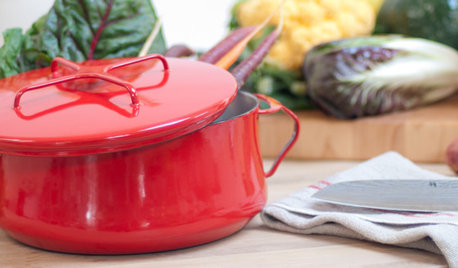Getting a gelatinous stock, how?
tradewind_64
16 years ago
Related Stories

SHOP HOUZZShop Houzz: Stock Up for Outdoor Entertaining
Get stocked up for backyard parties and barbecues with the right tableware, decor and more
Full Story0

PRODUCT PICKSGuest Picks: Christmas Stockings for Stuffing
Not just any sock will do for this all-important holiday. Treat your mantel to one of these extra-special stockings this Christmas
Full Story
LIFEYour First-Aid, Emergency and Medical Supply Checklist
Don’t wait until you need them to stock your first-aid kit and emergency stash. Here’s what to get and where to keep it
Full Story
SHOP HOUZZShop Houzz: Stock Your First Laundry Room
Equip your laundry room with the right tools and handle the mountains of washing, fluffing and folding with ease
Full Story0

SHOP HOUZZShop Houzz: The Well-Stocked Kitchen
Kitchen tools, serveware, popular cookbooks and so much more
Full Story0

BASEMENTSHouzz Tour: Swank Style for a Fully Stocked Basement
Tucking into plush seating or the steam shower, curling up with wine or a movie, these homeowners can do it in utmost comfort
Full Story
SHOP HOUZZHouzz Products: Stock Your Kitchen for Autumn
Serve hearty meals with a side of style by gathering up these fall-perfect pots, linens, serving pieces and kitchen tools
Full Story
SHOP HOUZZShop Houzz: Stock Up on Bedroom Basics
Freshen up your bedroom with fluffy duvets, crisp sheets and maybe even a new mattress
Full Story
SHOP HOUZZShop Houzz: Get Your Closet Ready for Sweater Weather
Stock up on sweater bags, shelf dividers, cedar sachets, scarf organizers and more
Full Story0

FEEL-GOOD HOMEThe Well-Stocked Minimalist
The trick is to have just enough of the right stuff at home — no more, no less. Here’s how to do it
Full Story



lindac
pkramer60
Related Discussions
Seed starting in gelatin capsules?
Q
Weird Gelatinous Insect Eating Eggplant!
Q
seeds in gelatin
Q
How do I go about getting a Christmas stocking knitted?
Q
annie1992
tradewind_64Original Author
khandi
tradewind_64Original Author
tradewind_64Original Author
steelmagnolia2007
tradewind_64Original Author
lindac
annie1992
lsr2002
danab_z9_la
moosemac
steelmagnolia2007
grainlady_ks
tradewind_64Original Author
kframe19